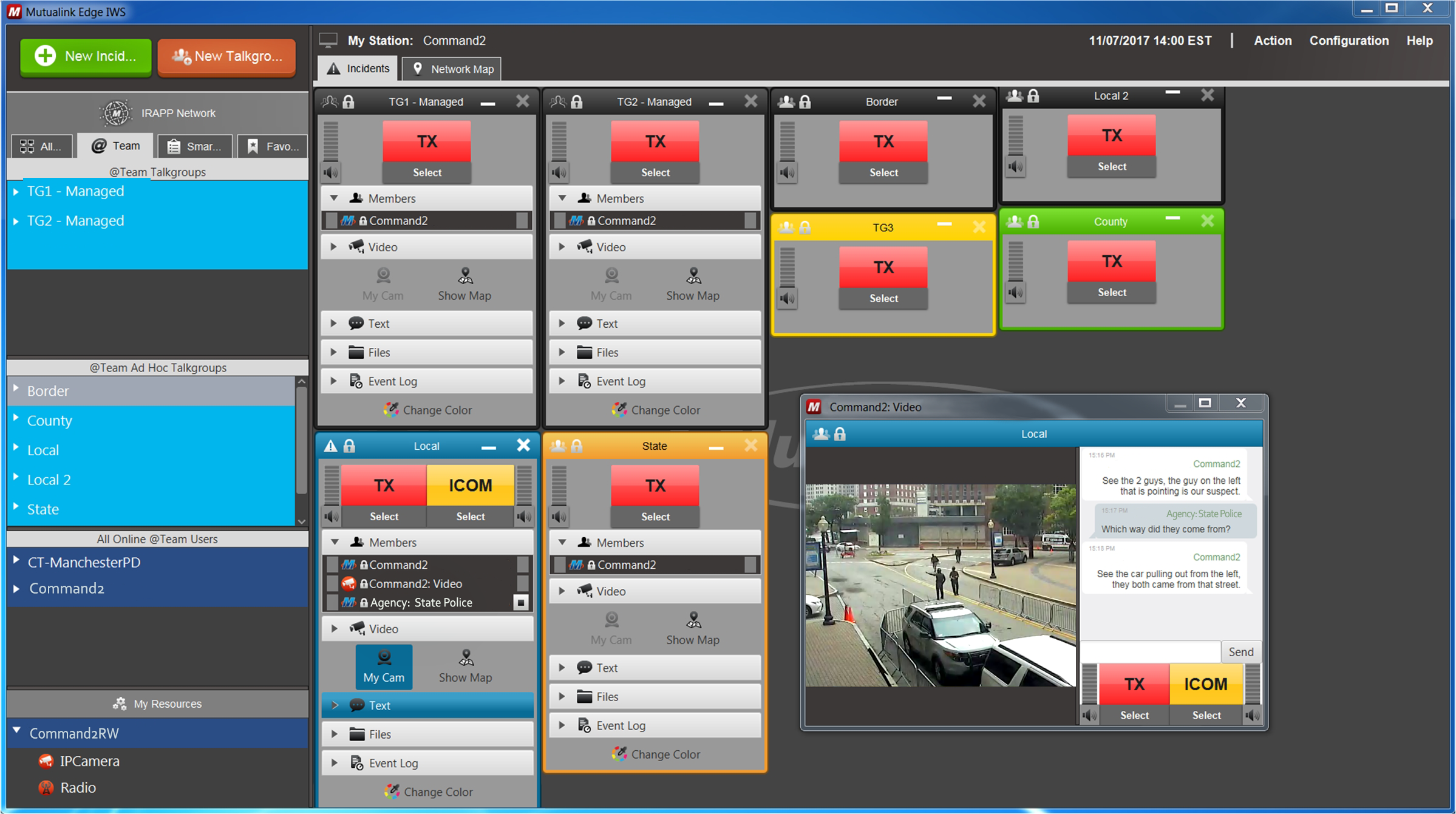Incident Command & Mutualink
The Incident Command System (ICS) was developed by the fire service in the 1970s, after a series of California wildfires. The fire service and emergency management organizations refined ICS over the years into an “all risks” or “all hazards” system. It is now used for managing emergencies of any type.
In 2004, the U.S. Department of Homeland Security developed the National Incident Management System (NIMS). NIMS utilizes ICS and provides a common nationwide approach for whole community response to all types of threats and hazards. NIMS guides all levels of government, nongovernmental organizations (NGOs), and the private sector to work together to prevent, protect against, mitigate, respond to, and recover from incidents regardless of cause, size, location, or complexity.
The basic premise of ICS is to provide first responders a practical, widely applicable framework. ICS enables efficient incident management by coordinating personnel, resources, procedures and communications. ICS ensures organizational structure success, whether under a single Incident Commander or a Unified Command involving various disciplines.
The primary objective of effective incident command is the exchange of timely, accurate, and clear verbal communication. In order to make informed decisions and resolve issues, critical information must be shared and managed. Unfortunately, communication shortcomings are often identified as a common obstacle amongst stakeholders involved in an incident.
Mutualink Interoperability Based on ICS
In 2006, the founders of Mutualink recognized that the technology they had developed could solve interoperable communication deficits. Today, Mutualink’s robust multimedia interoperability solution is an inclusive open platform bridging communication gaps. It allows for collaboration between private sector organizations and public sector agencies, leveraging existing communication resources. Bridging siloes amplifies the value of disparate communications systems.
The Mutualink solution easily integrates into any organization’s incident command and mutual aid policies and procedures. It amplifies the effectiveness of ICS by allowing for instant, secure, private on-demand interoperability from a computer or mobile device. Bridging communications between first responders and the information they need enables them to take action during an emergency, or to assess threats and proactively mitigate them.
Benefits of Mutualink’s ICS-Based Solution
Like the Incident Command System in which it is based, Mutualink is scalable and flexible to allow users to adjust according to any given condition. It allows public safety incident commanders as well as private security teams from other disciplines to quickly enable inclusive communication via voice, video or data. With the Mutualink platform they can coordinate resources in order to enhance situational awareness and expedite incident resolution. The Mutualink system can also receive and read alarms and event messages and automatically create collaboration sessions with those who need to know. The goal is to reduce time to incident resolution.
Emergency managers choose our platform to connect critical information in the right form to the right people at the right time, no matter what technology or network they use. For routine daily operations, preparing for a planned event, or responding to a critical incident, they turn to Mutualink for seamless and secure bridged communications based on ICS.
From our inception to present day, we remain steadfast in our core commitment to make critical information actionable in an otherwise unpredictable world. We do this in alignment with the goals and objectives of the Incident Command System.
By George Battle, Mutualink Director of Public Safety Operations & Customer Success
____________
George Battle is the Director of Public Safety Operations & Customer Success for Mutualink. Mr. Battle has thirty-one years of law enforcement experience with the Connecticut State Police, retiring as the Colonel / Deputy Commissioner in January 2019. He is a graduate of the FBI National Academy, has a master’s degree in Organizational Leadership and is board-certified Protection Professional in Security Management through ASIS International.





